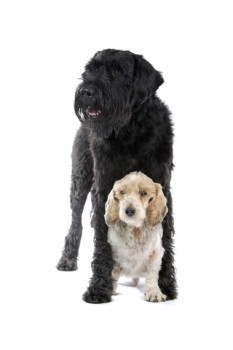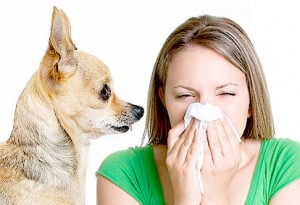 This is a tough one. Pretend you’re on the school board of a small, rural school district in Southern Ohio. An autistic child in your school needs to bring her service dog with her to class. In your small district, you have only a limited number of special education classroooms, and the room this child is in is taught by a woman who is allergic to dogs. What do you do?
This is a tough one. Pretend you’re on the school board of a small, rural school district in Southern Ohio. An autistic child in your school needs to bring her service dog with her to class. In your small district, you have only a limited number of special education classroooms, and the room this child is in is taught by a woman who is allergic to dogs. What do you do?
Continue reading Teacher’s Allergies vs. Autistic Child’s Service Dog: What would you do? →
 With this hot summer weather, my allergies have really kicked into high gear, so it’s a good time to talk about dogs for people who suffer from allergies. Although no dog will be totally un-allergenic, there are several that are less likely to produce severe reactions in most people.
With this hot summer weather, my allergies have really kicked into high gear, so it’s a good time to talk about dogs for people who suffer from allergies. Although no dog will be totally un-allergenic, there are several that are less likely to produce severe reactions in most people.
For a complete list, check out our short article on hypoallergenic dog breeds. Here are my top ten choices.
Continue reading Tuesday Top Ten: Dogs for Allergic People →
I received an e-mail from the good people at Nasonex today.
“I wanted to let you know that the name chosen for Ronnie’s four-legged friend is now posted at “Don’t Blow It” (www.dontblowit.com). As a reminder, for every new person that plays the game, we’re planting a low-allergenic tree through American Forests.”
So, for those of you who were wondering, make sure to check it out!
Until next time,
Good day, and good dog!

While it’s true that your immune system responds to the dander and saliva of your dog, it’s also true that reducing the amount of fur in your home can help to reduce the size of your allergic response. Here are our top ten suggestions to help you have your dog and love him, too!
Continue reading Tuesday’s Top Ten: Ways to Reduce Your Allergic Response to Your Dog →
 The European Respiratory Journal has published a study by German researchers that states having a dog in the home during your child’s infancy is actually healthy! It appears to be protective against future allergic reactions such as asthma, eczema, and hay fever.
The European Respiratory Journal has published a study by German researchers that states having a dog in the home during your child’s infancy is actually healthy! It appears to be protective against future allergic reactions such as asthma, eczema, and hay fever.
Continue reading Ah…Ah…Ah…CHOO! →
 Lots of people have pet allergies. Several strategies can help to reduce the incidence of allergic reactions due to pet dander. Simply follow as many of these as you can as often as you can for the best results. After all, if you can’t breathe, who is going to take care of your pets?
Lots of people have pet allergies. Several strategies can help to reduce the incidence of allergic reactions due to pet dander. Simply follow as many of these as you can as often as you can for the best results. After all, if you can’t breathe, who is going to take care of your pets?
- Vacuum carpets and furniture on a daily basis.
- Vacuum curtains on a regular basis.
- Dust with a cloth that picks up the dust and doesn’t just move it around.
- Avoid upholstered furniture, curtains, and carpeting. Opt for furniture with leather, vinyl, or wood. Install hardwood flooring and blinds.
- Brush your pets on a regular basis, preferably outside the living area.
- Wipe down all surfaces on a weekly basis.
- Consult your veterinarian about sprays that minimize dander. Purchase ones that he recommends.
- Limit the areas of the home that your pet has access to on a daily basis. Electronic collars can assist with that.
- Get an animal that is known for causing fewer allergic reactions in people.
- Purchase an air purification system that targets animal dander.
If you want to have pets in your home, but you are allergic to their dander, follow the strategies listed for some relief to the potential reactions that you might experience. Plus, visit your doctor and get his advice on the advisability of owning a pet that can cause allergic reactions in you.
All Dog, all the time! News, photos, reviews, guides and more.
 This is a tough one. Pretend you’re on the school board of a small, rural school district in Southern Ohio. An autistic child in your school needs to bring her service dog with her to class. In your small district, you have only a limited number of special education classroooms, and the room this child is in is taught by a woman who is allergic to dogs. What do you do?
This is a tough one. Pretend you’re on the school board of a small, rural school district in Southern Ohio. An autistic child in your school needs to bring her service dog with her to class. In your small district, you have only a limited number of special education classroooms, and the room this child is in is taught by a woman who is allergic to dogs. What do you do?



